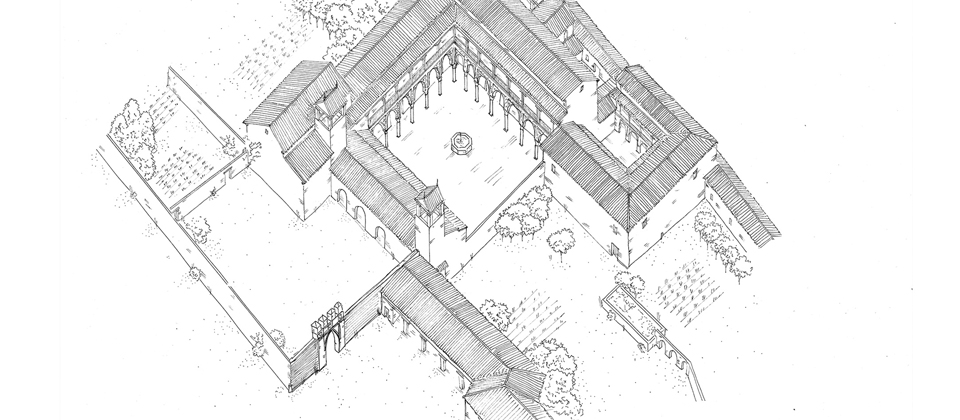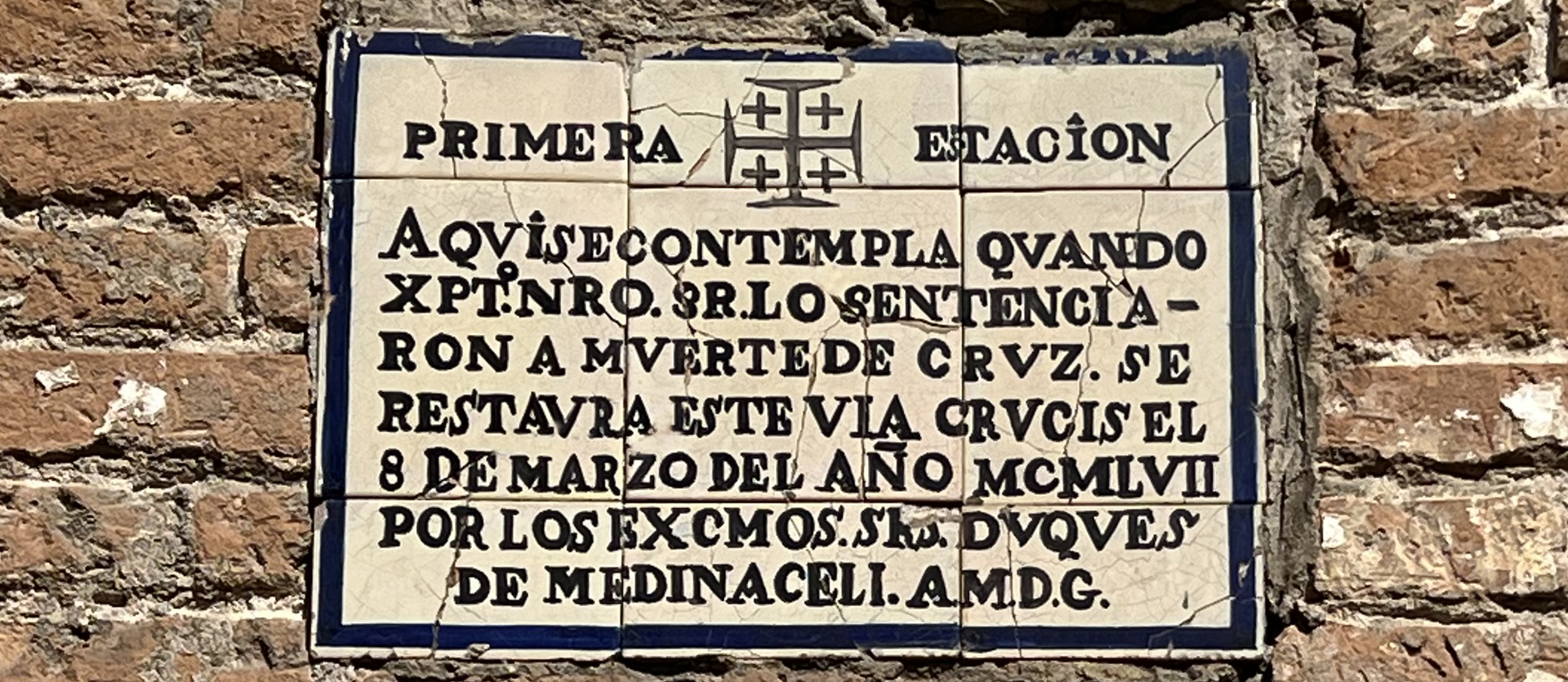Judges' Lounge
Names alluding to the Passion
Like the house itself, all its rooms have been popularly baptised with names alluding to the Passion of Christ. This is a consequence of the development and progressive theatricalisation of the Stations of the Cross which, on his return from his pilgrimage to Jerusalem, were instituted by the Marquis of Tarifa, whose first station, as expressed in a booklet of 1653, "It is the Holy Cross that is in the corner of the House of the Lord Duke of Alcalá and the said cross is meditated on when they dragged His Divine Majesty out of the House of Pilate". The repeated dramatisation of this scene in front of the façade of the palace of the Dukes of Alcalá ended up assimilating it to that of the evangelical prefect of Judea, to the point that the aforementioned booklet states that its façade was carved "...".in the manner and traça of that of Pilate"and later works considered it to be a copy of the Jerosolimitan Praetorium and as such it was shown to the decommon traveller. The first time the name Casa de Pilatos is documented is in the mid-18th century in an inventory of property in Madrid, in the description of a painting, which indicates that it must have been fully established in Seville long before that time. The name Salón de Descanso de los Jueces (Judges' Resting Room) evokes the Sanhedrin, the council of wise men who served as judges and who met in a large room with a door leading to the temple (chapel) and another to the outside (courtyard). Picturesque Seville which Amador de los Ríos published in 1844.
The plasterwork of the chapel doorway
Of all the plasterwork of the palace, the most beautiful of which are the ones that adorn the carpanel arch which gives access to the Chapel, an original synthesis of the gothic tracery motifs -style that was the benchmark of modernity in Seville at the end of the 15th century - and of others typical of traditional Sevillian aesthetics, the Mudejar -the one inherited from the Islamic city - as well as the vegetal decorations on its alfiz or the small lobed windows, covered with latticework, of its frieze. This stylistic fusion is completed by the polychrome decoration of the doors that close this arch, with motifs typical of the early Renaissance, such as the human figures, the horns of plenty or the laurel wreaths that frame the arms of Enríquez and Sotomayor.
The arms of Enriquez y Sotomayor
You are at arms of Enriquez y Sotomayorwhich also appear in the friezes of some of the coffered ceilings, serve as a guide to distinguish the medieval palace of Don Pedro and Doña Catalina from the extension made by their son Don Fadrique, as they are different from those of Enriquez and Ribera arranged in the centre of all the tiled panels and in the friezes of the new coffered ceilings, arms which, until his death in 1509, could only be used by the son of Don Pedro's first marriage, Francisco Enriquez de Riberaas the first-born son of the House of Ribera.



